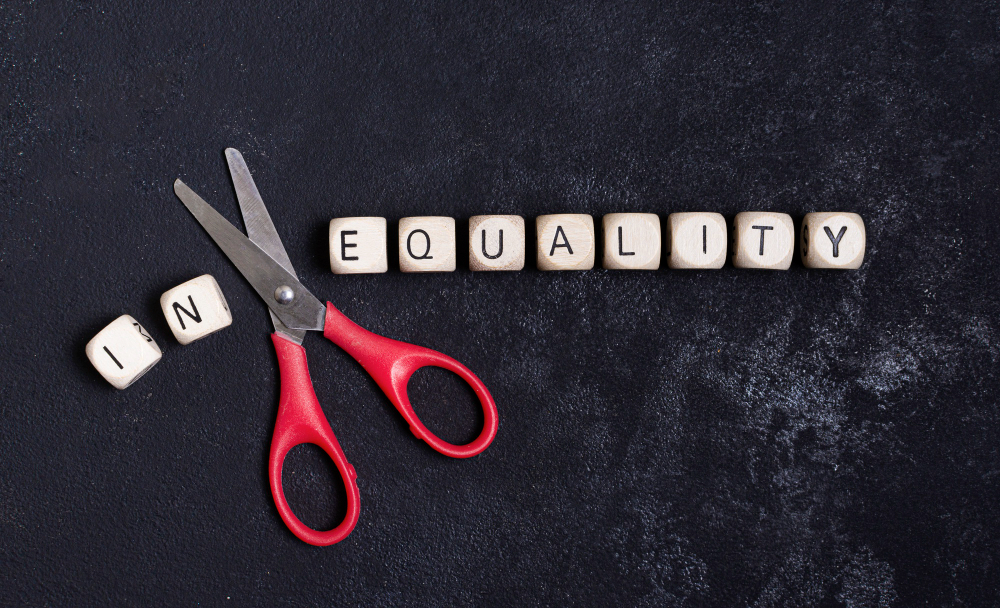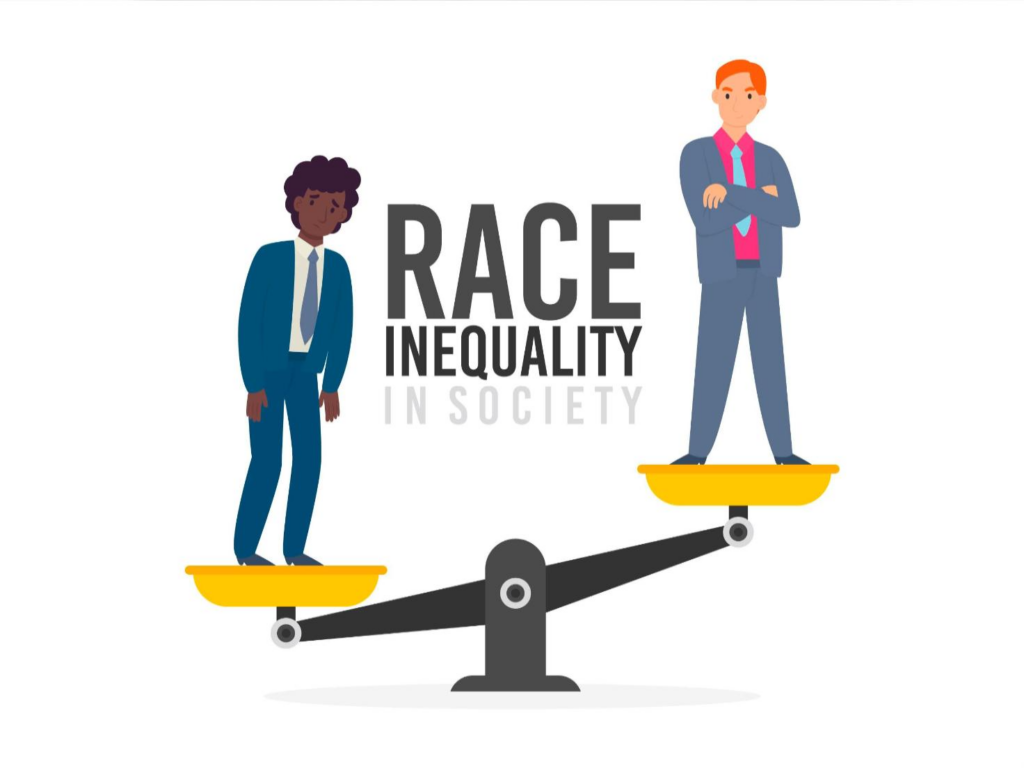
Fighting inequality in the modern world
Fighting inequality in the modern world is a complex, multifaceted issue that requires collective action and commitment across various levels of society. Inequality exists in many forms, including racial, gender, economic, educational, and health disparities. Addressing these issues requires both systemic changes and personal responsibility.
10. Key areas and actions that can help in the fight against inequality
1. Addressing Economic Inequality
- Living Wages: Ensuring that everyone receives a living wage is a fundamental step in addressing economic inequality. Supporting policies that raise the minimum wage and provide better labor rights protections can help lift people out of poverty.
- Universal Basic Income (UBI): Some experts and organizations advocate for UBI as a way to reduce economic disparities by providing a regular, unconditional payment to all citizens, helping to address income inequality and unemployment.
- Progressive Taxation: Advocating for a tax system that ensures the wealthiest individuals and corporations pay a fair share can help redistribute wealth and fund programs aimed at reducing inequality.
2. Combatting Racial Inequality

- Education and Awareness: Promoting education on the history and ongoing impact of racism is critical. Understanding systemic racism, privilege, and bias can empower individuals to recognize their role in either perpetuating or combating inequality.
- Anti-Racism Policies: Governments and institutions must implement policies that actively address racial inequalities. This could include reforms in policing, judicial systems, housing, and employment practices.
- Representation Matters: Encouraging diverse representation in leadership, media, and the arts helps combat stereotypes and gives underrepresented groups role models to look up to.
3. Fighting Gender Inequality
- Equal Pay for Equal Work: Gender pay disparity remains a critical issue in many countries. Supporting initiatives that promote pay transparency, family leave, and equal opportunity for all genders is essential.
- Ending Gender-Based Violence: Addressing violence and discrimination against women and LGBTQ+ individuals is vital. Support for legislation against domestic violence, sexual harassment, and hate crimes is an important step toward equality.
- Supporting Reproductive Rights: Ensuring access to healthcare, including reproductive services, allows individuals to make informed choices about their health, careers, and lives, thus enabling greater equality.
4. Promoting Educational Equality
- Access to Quality Education: Inequality in education often leads to inequality in life opportunities. Supporting policies that ensure access to free, high-quality education for all children, regardless of socio-economic background, is crucial for leveling the playing field.
- Scholarships and Grants: Providing financial aid and scholarships for underprivileged students can reduce barriers to higher education and career advancement, helping to create more opportunities for marginalized groups.
- Addressing the Digital Divide: In the modern world, access to the internet and technology is essential for education. Ensuring equitable access to digital tools, especially in underserved communities, is necessary for closing the education gap.
5. Health Inequality and Access to Healthcare
- Universal Healthcare: Advocating for universal healthcare ensures that every individual, regardless of income or social status, has access to necessary medical services.
- Mental Health Support: Mental health services are often underfunded and stigmatized. Expanding access to affordable mental health care is essential for supporting individuals, especially in underserved communities.
- Addressing Social Determinants of Health: Inequality in health outcomes is often driven by factors like poverty, lack of access to nutritious food, and unsafe living conditions. Policies that address these social determinants can help reduce health disparities.
6. Combating Inequality in the Workplace
- Inclusive Hiring Practices: Companies should adopt inclusive hiring practices that prioritize diversity and equal opportunity. This can help reduce discrimination based on race, gender, sexual orientation, or disability.
- Workplace Flexibility: Providing more flexible work environments, including remote work options, family leave, and accommodating disabilities, can reduce barriers for underrepresented groups in the workforce.
- Promotion of Workers’ Rights: Supporting unions, advocating for fair wages, and protecting workers from exploitation are important steps toward ensuring equal treatment in the workplace.
7. Empowering Marginalized Communities
- Supporting Local Communities: Investing in local businesses and initiatives that serve marginalized communities helps reduce disparities in economic opportunities and improves local infrastructure.
- Grassroots Movements: Supporting grassroots activism and movements led by marginalized communities is essential. These movements, such as those advocating for racial justice or environmental equity, often lead to lasting systemic change.
- Inclusive Policy Making: Ensuring that marginalized groups have a voice in the political and policy-making process is crucial for creating laws and systems that promote equality.
8. Promoting Global Equality
- Fair Trade and Ethical Consumption: Supporting businesses that follow fair trade principles ensures that workers in developing countries are paid fairly and work in safe conditions. Ethical consumerism can also reduce the impact of exploitative labor practices in global supply chains.
- International Aid and Advocacy: Addressing global inequalities through international aid programs, fair trade agreements, and advocacy for human rights can help reduce disparities between rich and poor nations.
9. Technology and Innovation for Equality
- Digital Literacy: As technology plays a bigger role in our daily lives, ensuring that all individuals, regardless of socio-economic background, have access to digital literacy programs can empower marginalized groups and bridge the gap in technology.
- Tech for Social Good: Leveraging technology to solve problems like access to clean water, education, and healthcare can be an effective tool for reducing inequality in developing regions and underserved communities.
10. Personal Responsibility and Advocacy
- Educate Yourself: Take the time to understand the issues surrounding inequality in your community and beyond. Read books, listen to podcasts, or engage in discussions that help you understand the root causes and consequences of inequality.
- Advocate for Change: Use your voice, vote, and resources to advocate for policies and practices that promote equality. Support movements that fight against inequality, whether through social media, volunteering, or financial contributions.
- Support Diversity and Inclusion: In your personal and professional life, champion diversity and inclusion by recognizing biases, supporting diverse colleagues, and creating inclusive spaces.
Conclusion
Fighting inequality in the modern world requires collective action across various spheres—economic, social, political, and personal. While the road ahead is challenging, each step toward equality, whether through policy change, community involvement, or individual actions, makes a difference. By staying informed, engaging in meaningful conversations, and actively working to promote fairness and justice, we can contribute to creating a more equal world.

Add a review
Your email address will not be published. Required fields are marked *